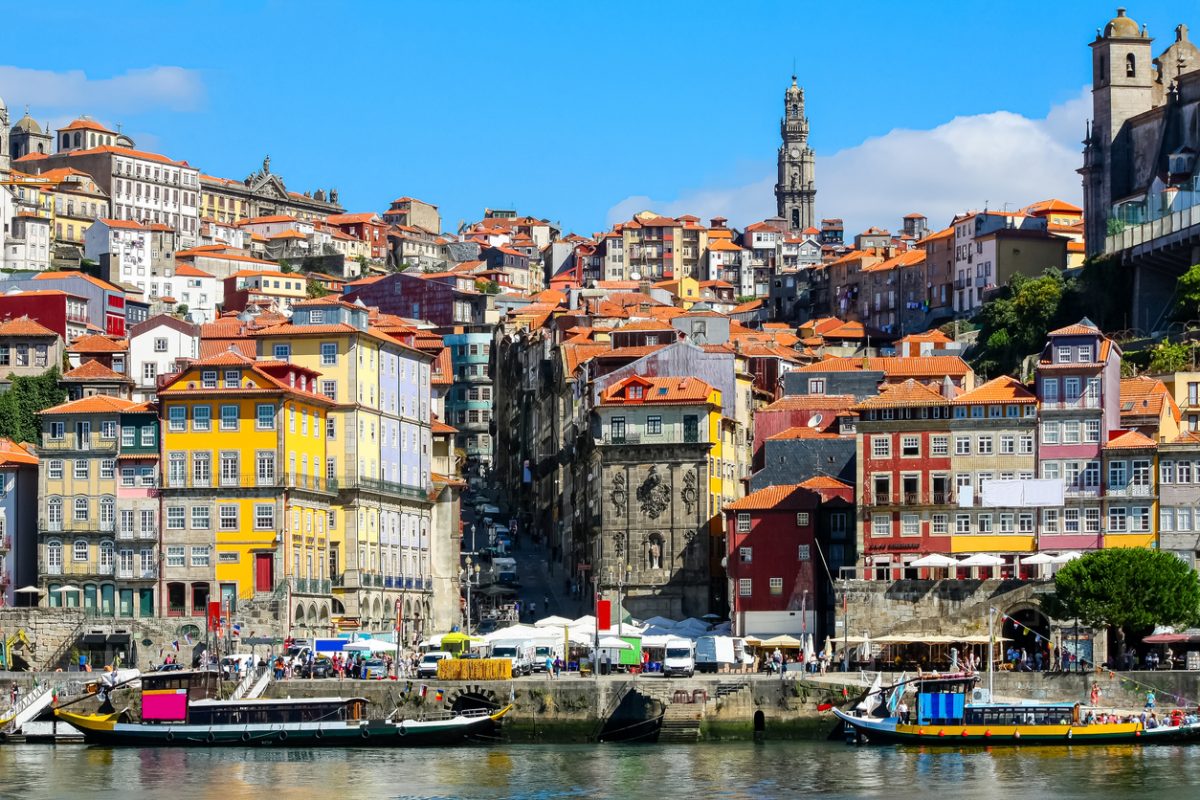Are you looking for things to do in Porto in winter? This blog post details them all!
The northern Portuguese city of Porto is one of the most gorgeous European cities, with plenty of incredible architecture and gorgeous scenes over the River Douro, snaking through the city.
It’s a popular city break throughout the year, but it’s relatively southern location and semi-mild winter temperatures make it a popular winter city break as well.
In this article, we’ll look at the best things to do in Porto in the winter months!
This article may contain affiliate links.
What’s Porto like in winter?

Now, while Lisbon, the capital of Portugal, has a mild average winter temperature – so much so that it’s often considered a winter sun destination – Porto has different weather conditions.
In fact, it can be decidedly chilly here in January, especially when that Atlantic wind blasts! It’s also Portugal’s rainy season.
However, snow is rare, the winter months are short and you should be lucky with at least a bit of sunshine.
Here’s a rundown of the temperatures and any festivals during the winter months.
Porto in November
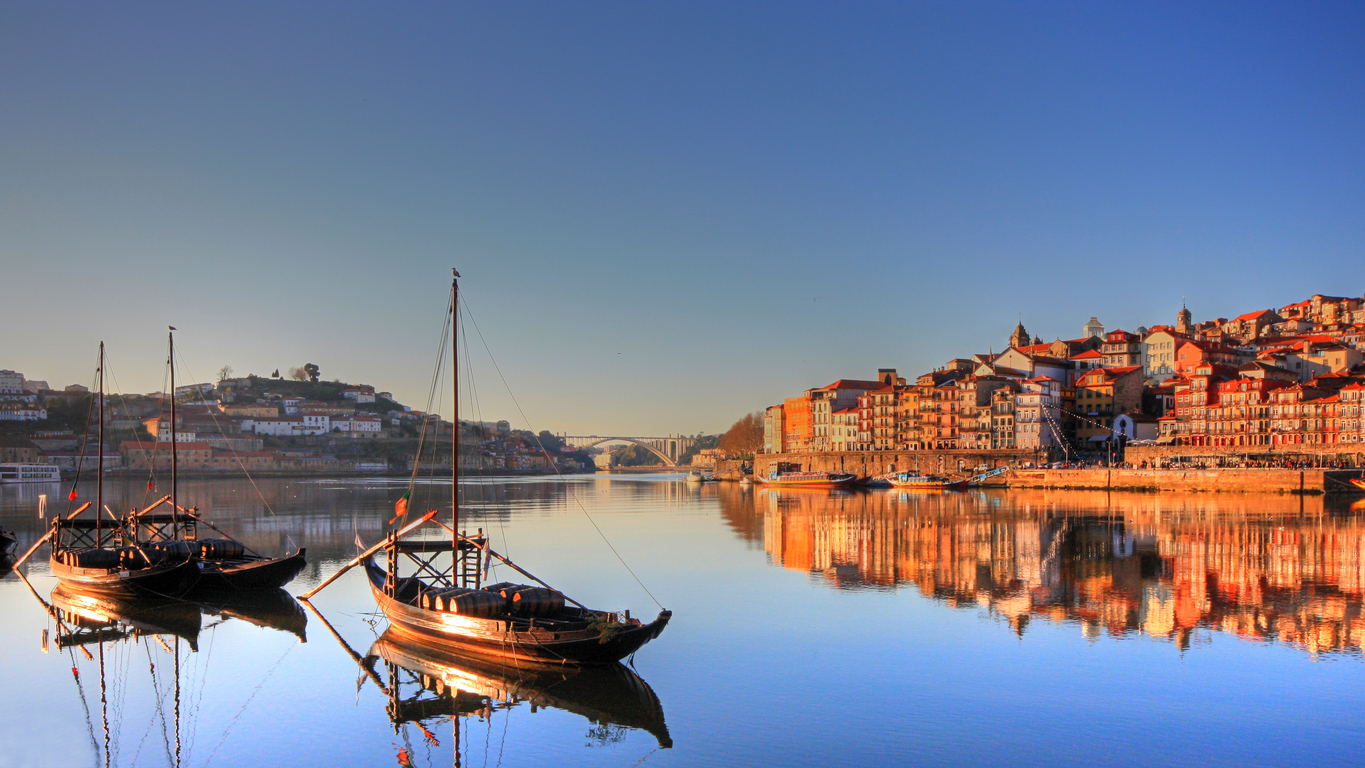
Porto in November still hangs onto autumn, with a few brisk clear days! The average temperature is around 14°C/ 57.2°F, with highs of 17°C/ 62.6°F.
By the end of the month, Christmas fever is in the air and festive lights bedeck the streets. The Porto Christmas market usually opens on the 1st December.
Porto in December
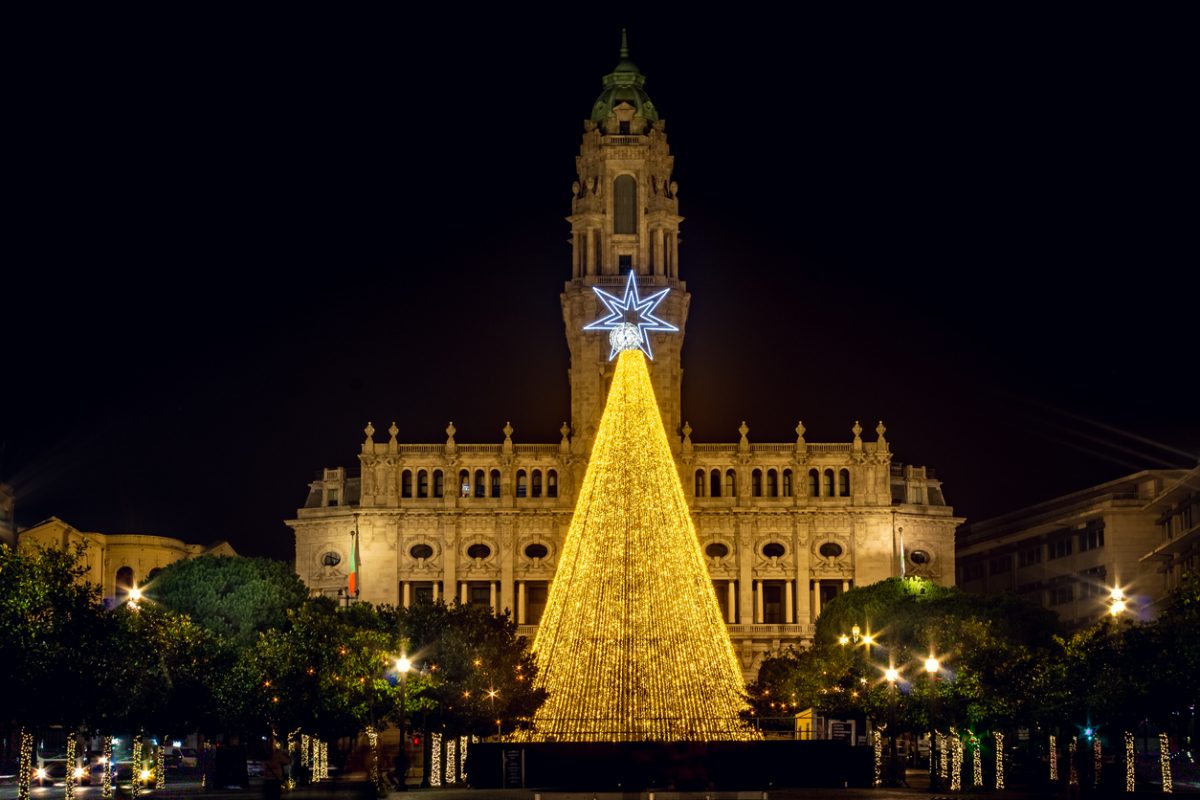
Christmas fever is alive and well in Portugal – it’s not quite as religious as Spain, but it’s still a Catholic country and the holidays are celebrated in cities, towns and villages all around the country.
Weather wise, expect the daytime temperature to reach around 14°C/ 57.2°F, but it can feel much colder – especially at night. Being in the Northern Hemisphere, the earliest sunset of the year is on 21st December.
Porto is also the wettest month of the year, with an average rainfall of around 20 cm/ 8 inches.
Porto in January
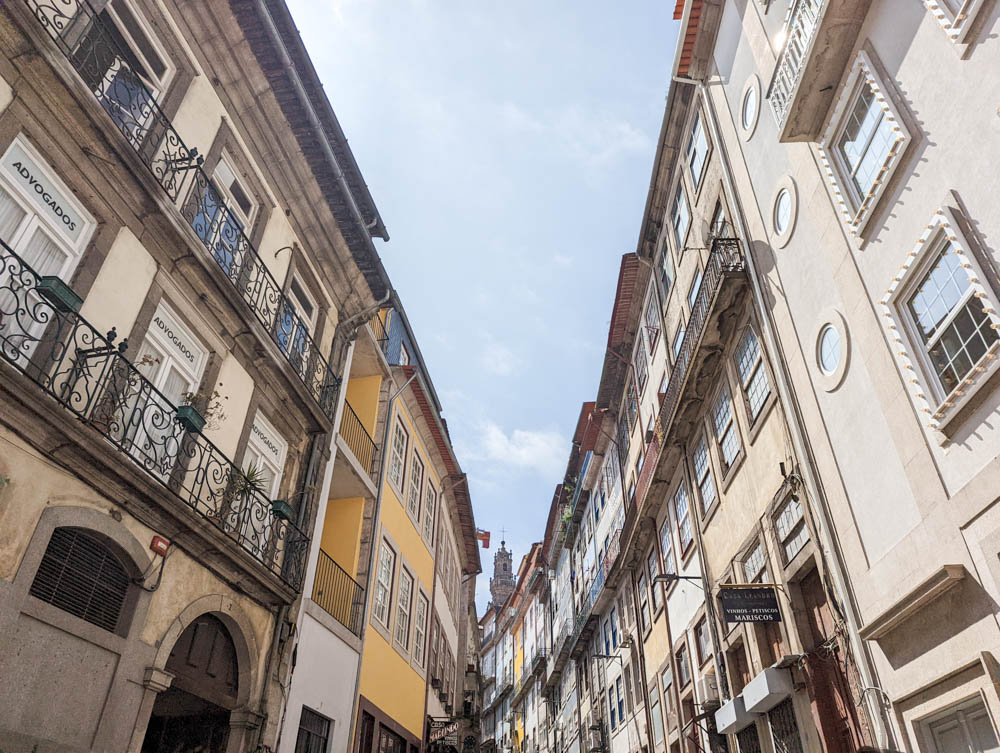
This is the coldest month of the year, and when I visited in January it felt very chilly, especially coming from the fairly balmy climate of Lisbon! The typical weather is a little cold and cloudy.
However, the temperature varies, and you could get some winter sun here. Expect weather of around 10°C – 13°C, possibly rising to 15°C if you’re lucky.
Thanks to the cloudy conditions and the fact that it’s after Christmas, this is one of the quieter months for tourism to Porto.
All of the attractions I’ll list are open in this month (unless specified otherwise), but you’ll notice much less queuing and fewer crowds! This is also a great time to snag some accommodation and flight deals.
Porto in February

Porto warms up a little in February, particularly at the end.
However, for the most part, the weather stays cool, crowds stay small and prices stay low.
You can definitely get a bargain if you’re visiting during this month!
Porto in March

March is a great time to visit Porto.
The weather can be beautiful and sunny, warming up to a high of 17°C / 62.6°F, but it’s still far enough away from peak season that you’ll have most of the attractions to yourself.
It’s not quite beach weather (and the average water temperature is the lowest of the year at 13°C (55°F), but March is a lovely time for walks along Porto’s coastline.
Generally, the weather warms up considerably throughout the month and gets warmer a lot quicker when compared to other destinations in Europe.
Reasons to visit Porto in winter
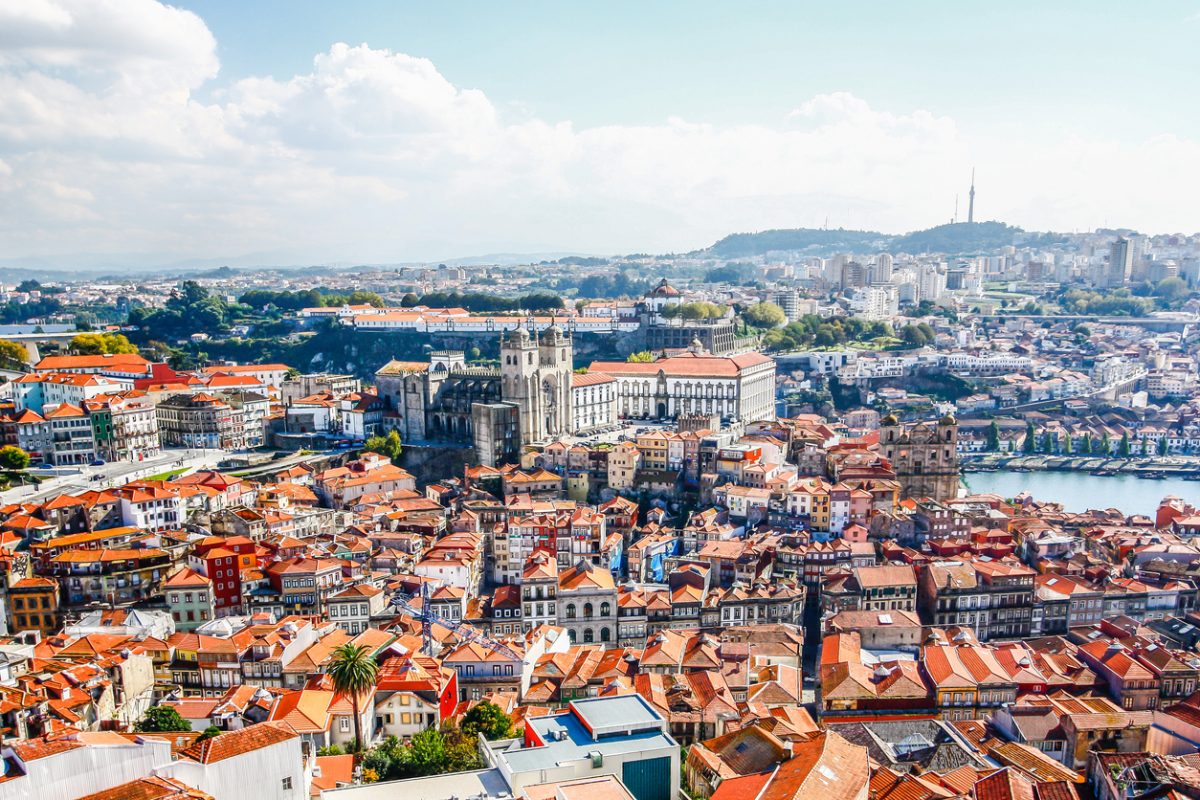
Here are just a few reasons to visit Portugal’s second biggest city in winter!
- Fewer crowds: Like many cities across Europe, Porto can be heaving in the summer peak season. In the winter months, however, it’s much calmer – which is why it’s my favourite time to visit. You probably won’t need to queue up for attractions or reserve tables in restaurants.
- Lower prices: Flights to and hotels in this Portuguese city are incredibly cheap in the low season. If you’re flying within Europe, you can find some deals for less than 10 euros! Hotels are generally a lot better value too, so you can visit on a budget or opt for luxury for less.
- Mild weather: While Porto can be chilly from November to March, it’s generally a lot warmer than many other European destinations like UK, Germany and Scandinavia. Plus, if you’re coming from Northern USA, you’ll find the temperatures positively balmy! Plus, you can always tie your Porto winter trip into a wider holiday seeing the whole country – destinations like Lisbon and the Algarve are warmer!
- More local life: When the crowds leave Porto, local life is uncovered. Some of my best memories from my January Porto trip are visiting quiet cafes and chatting with the owners and looking around a local flea market and trying to practice my Portuguese. The entire city has a much more local vibe than the chaotic summer months.
Things to do in Porto in winter
Porto Christmas markets
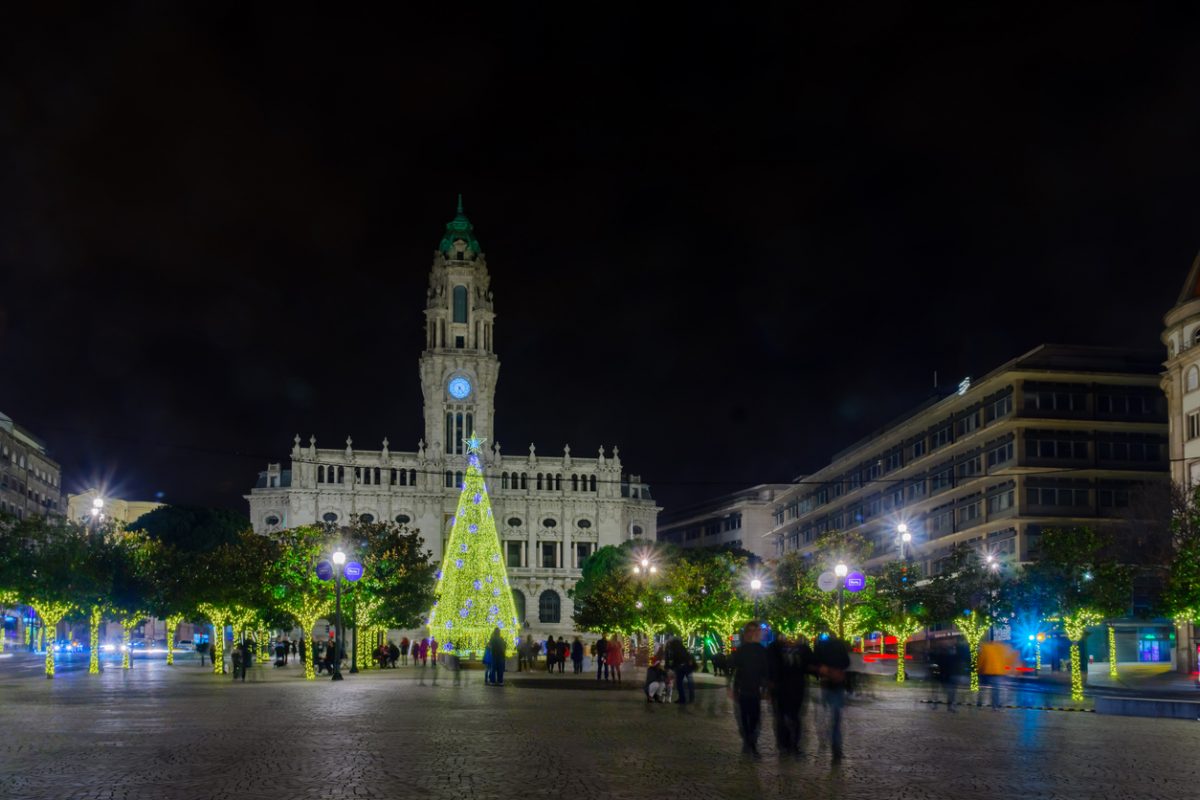
Most people’s Europe winter itinerary includes visiting Christmas markets – if you’re a festive fan always looking for Christmas magic, then head here!
While Porto’s Christmas markets aren’t quite as magical as those that you might find in Bucharest, Prague or Vienna, they boast incredible traditional Portuguese food and handicrafts for souvenirs or gifts.
As the temperatures aren’t sub-zero, there’s no snow, and they don’t sell mulled wine. But you will find plenty of Christmas cheer, and it’s an ideal break if you want to see Europe’s festive markets without freezing!
Markets spread across the city and include Mercado da Alegria with great Christmassy vibes, Artes e Oficios which is perfect to buy Portuguese souvenirs and the Urban Market.
Visit the Port Cellars

If you’re partial to a glass of port, then you’ve absolutely got to do this port tasting tour – Porto is where the fortified wine comes from, after all!
The drink was drunk in Porto for centuries, but thanks to the close relationship between England and Portugal largely due to the Treaty of Windsor (which is the world’s oldest military alliance!), English tradesmen used to turn up to the city in the 17th century.
They discovered port wine in 1678 – they traded the wine for codfish, which is a Portuguese delicacy, but doesn’t actually live in the waters around the country!
English people enjoyed this high-alcohol, high-sugar beverage, and took it back home, where it always went down a treat and became a staple in many of the elite classes’ drinks cabinets.
This is why many of the port wine cellars have English names. They’re located in Vila Nova de Gaia, which is actually a separate city from Porto, but it’s just a short walk or metro ride from Porto centre.
Here are a few I recommend visiting:
- Caves Ferreira: Dating back to 1751, this is one of the most popular cellars in Porto.
- Espaço Porto Cruz: This is an entire multimedia centre all about port wine!
- Taylor’s Cellars: This is another historic cellar with an exhibition about the fortified wine and a terrace to enjoy your drinks on!
Largely, you can just turn up to these cellars, especially in winter, but you may be asked to come back later or make a reservation.
If you want to learn a little more about the national drink of Portugal, you can also do an organised tour (which means you don’t need to worry about making any bookings or being turned away!). Click here to book.
Dom Luis I Bridge
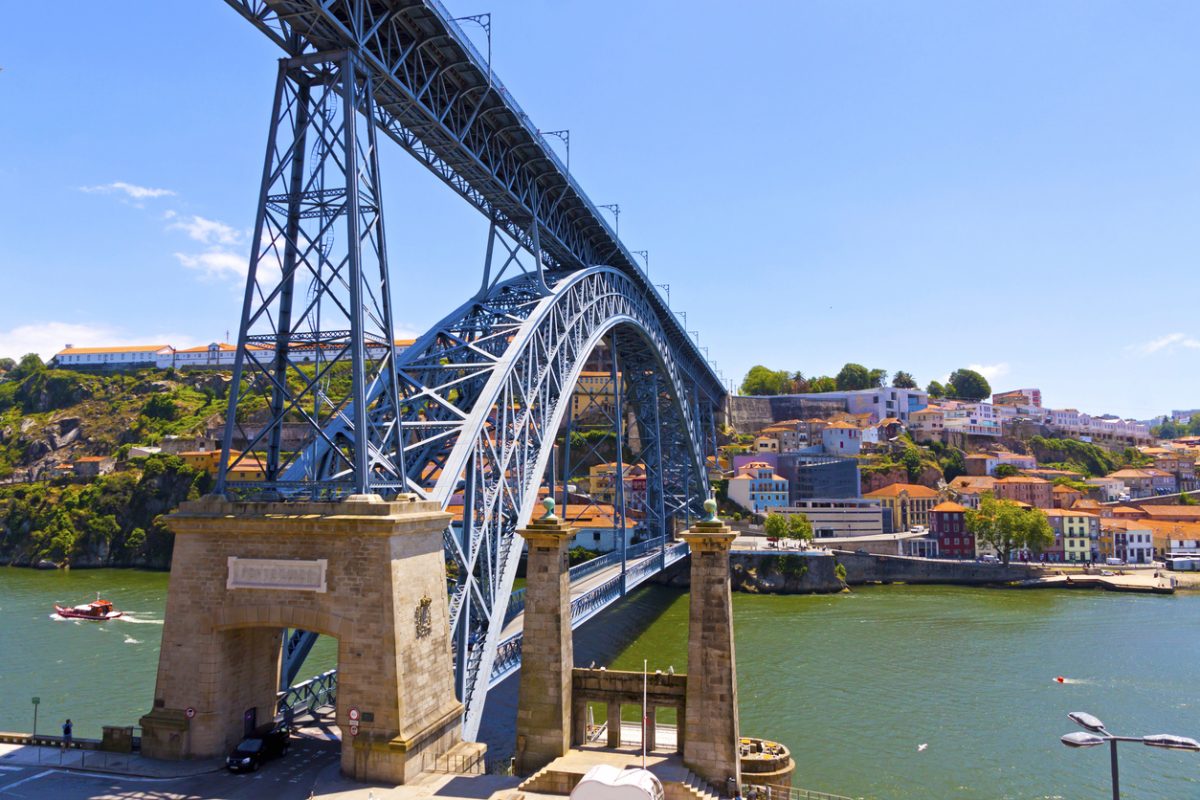
A landmark of Porto and one of the most popular tourist attractions in the country, the Luis I Bridge spans the River Douro and connects the city with Vila Nova de Gaia.
Contrary to popular opinion, this bridge wasn’t built by Mr Eiffel (who built the Eiffel Tower). It was in fact constructed by his business partner Société Willebroeck, who stopped working with Mr Eiffel just before he began his Parisian project!
Walking over this bridge, you’ll see Porto Cathedral, some of the oldest neighbourhoods of the city and look out over Vila Nova de Gaia. Turn around, and you can take in an epic view of Porto behind you.
Mosterio da Serra do Pilar
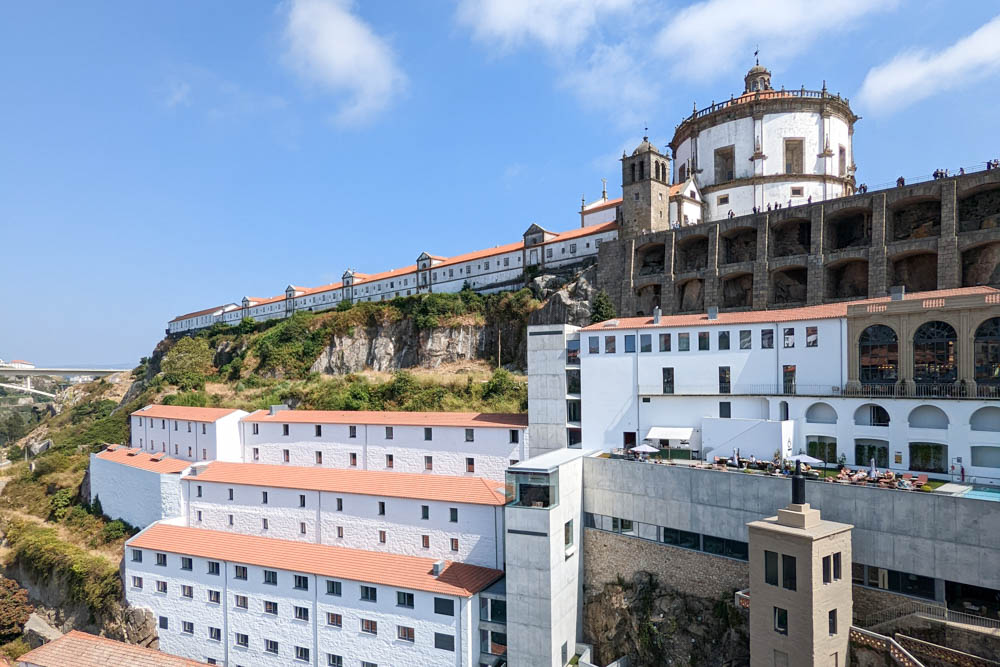
Mosterio da Serra do Pilar is a 16th-century monastery located in Vila Nova de Gaia, which is actually a different city to Porto.
Most tourists who visit this monastery don’t actually enter – they cross the Luis I Bridge to gaze at the incredible view of Porto over the Douro River.
From this angle, you can see Porto Cathedral, Clerigos Tower and take in many of the city’s churches and historic buildings.
It’s completely free to access the viewpoint – you can find it using this Google maps location.
Porto Cathedral
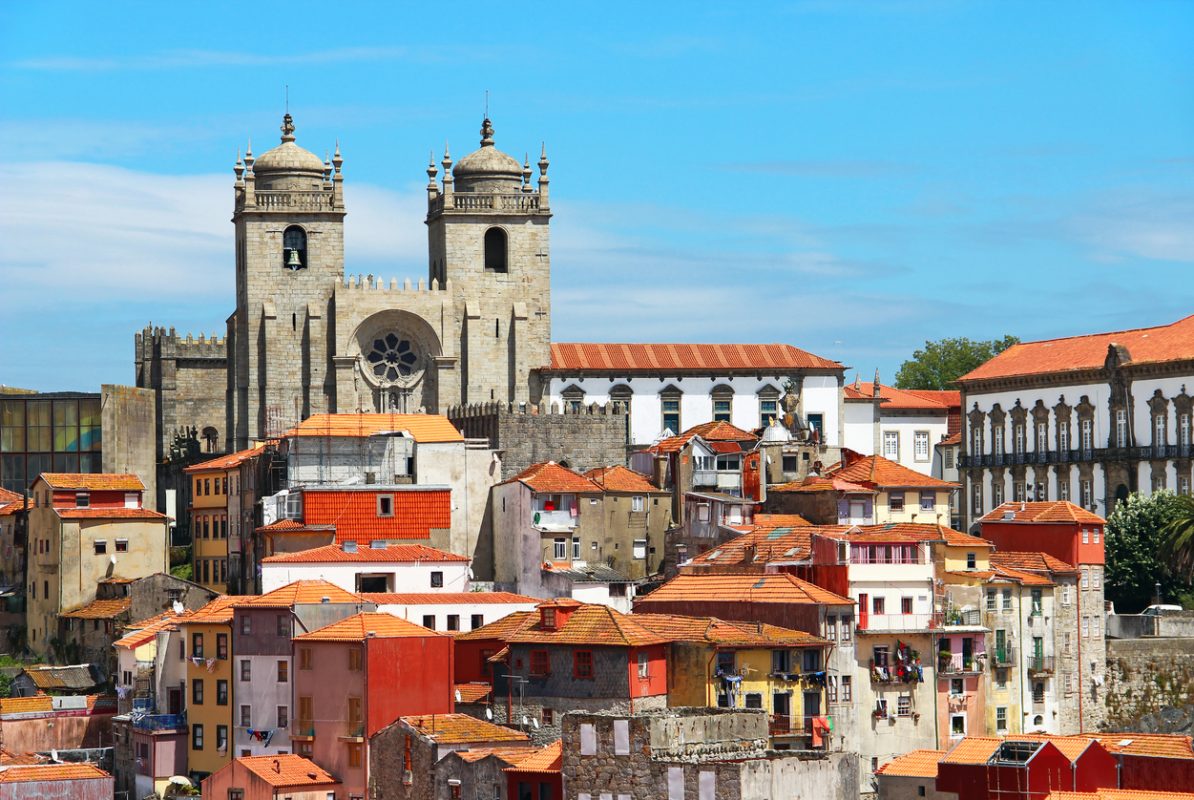
Located at the oldest part of Porto city – where the Celtic tribes first came – Porto Cathedral gazes over the River Douro and the rest of the city.
Once the site of a mosque, the cathedral today dates back to the 14th century and encompasses a monastery.
You can enter and look around the gorgeous interior and even climb up to the roof for more views of the Douro River.
A little more grimly, the square where Porto Cathedral and Bishop’s Palace are located was the site of public executions!
Bishop’s Palace
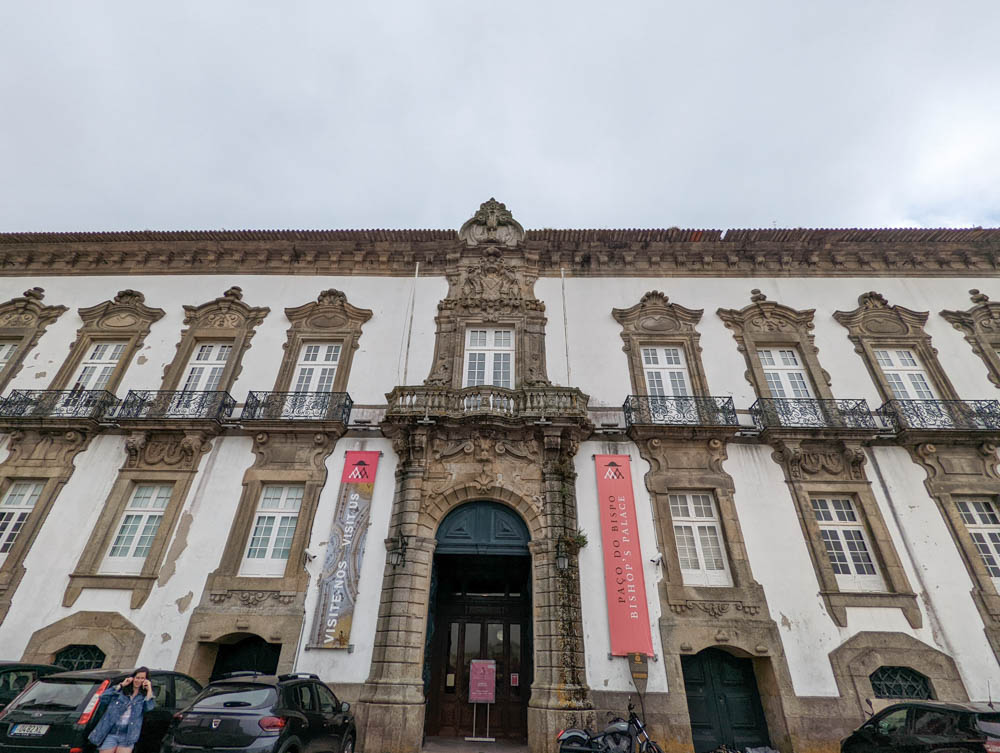
Standing next to Porto Cathedral, Bishop’s Palace dates back to the 12th – 13th centuries and was once the home of the Bishops of Porto.
In the 18th century, it was completely overhauled and remodelled in a Baroque style.
You can visit with a combo ticket with Porto Se, and it’s well worth witnessing the incredible architecture both inside and out!
Sao Bento Train Station
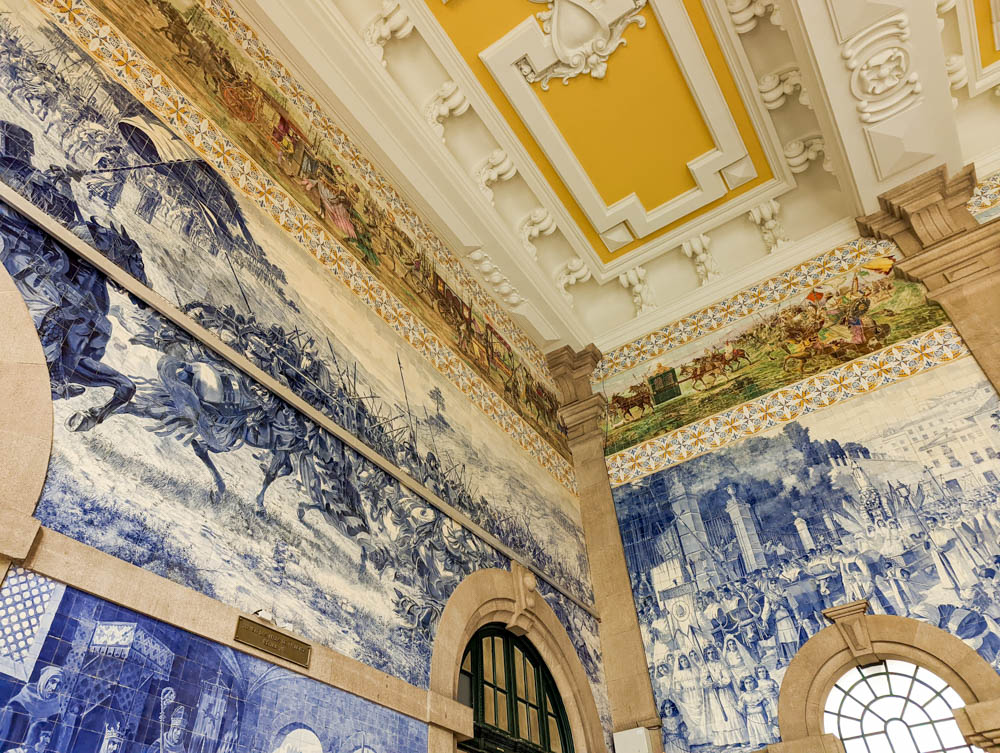
If you’re going to destinations like Barcelos and Braga, you might pass through Sao Bento Train Station anyway.
But it’s worth visiting even if you aren’t – it’s one of the most fascinating tourist attractions in the city.
Famous for gorgeous blue azulejos (tiles) depicting murals from Portuguese history, walking around Sao Bento is like visiting a wonderful free art gallery. Of course, as it’s a station, it’s open throughout the year!

Most prominent is perhaps a mural depicting a war with the Spanish.
Portugal and Spain both knew that if they went to war, both armies would be weakened, which would give the Moors an advantage.
So they decided to select just fifty men each to go to war, and decide the winner from this battle!
There are also murals, made out of azulejos, showcasing traditional Portuguese life.
Livaria Lello

Calling all Harry Potter fans!
Livraria Lello is one of the most beautiful and magical attractions in Porto and is well worth visiting during the winter months.
J.K. Rowling lived in Porto for a few years, during the time that she was writing the
Interestingly, if you see students from Porto university walking around, you might think you’ve stumbled upon a Harry Potter cosplay.
Purely coincidentally, they look like they’re students from Hogwarts!
Clérigos Church and Tower
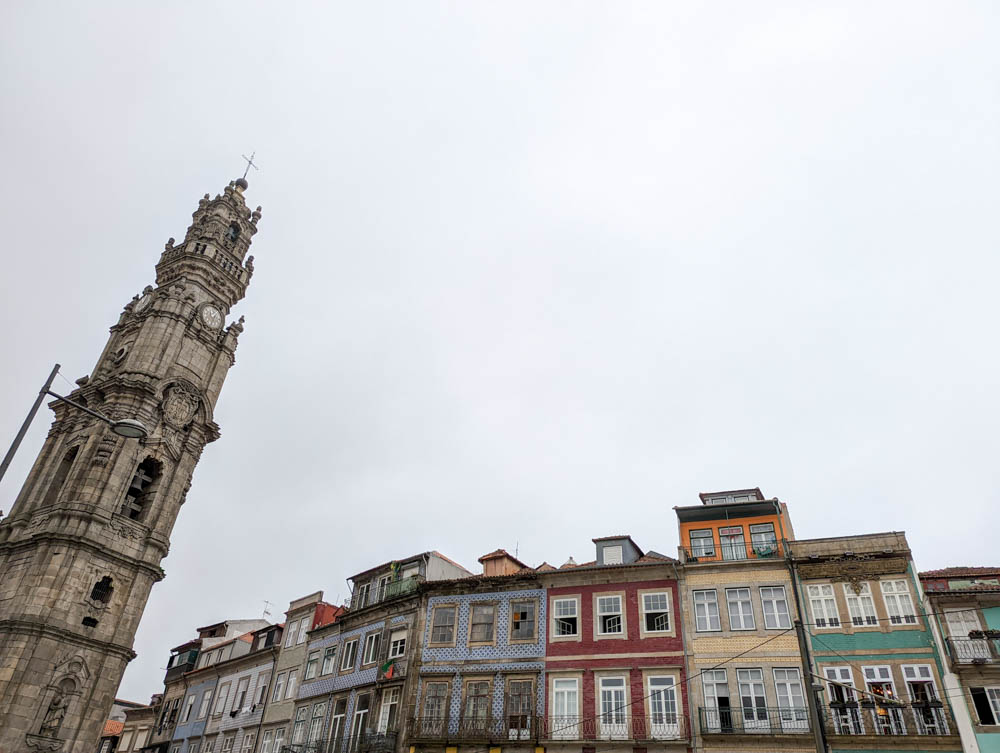
The iconic tower of Porto and one of the city’s most beautiful buildings, Clérigos Church is one of Porto’s many places of worship. However, it’s worth visiting this one to summit the tower and gaze at Porto from a birds-eye view.
The tower and museum are open during November and from February, but are closed in December and January. The church is open throughout the year.
If you’re visiting out of these months, you should find that, as the city is quieter, you’ll be able to buy a ticket to climb the tower right away, but during particularly busy periods you may need to purchase a ticket for a later time.
Six Bridges Cruise
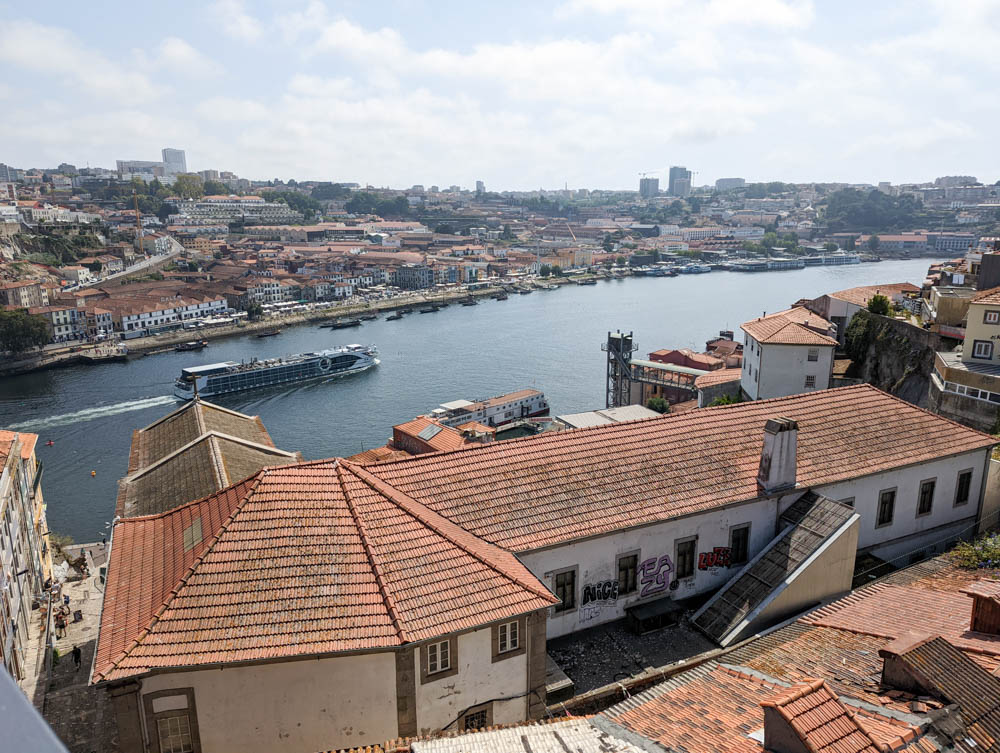
Porto is a city built around six bridges, and this boat trip is a must-do to orientate yourself with the city!
On this tour, you’ll follow the route of the old Rabelo boats, which were driven by wine merchants making their way into the city.
As you sail past the bridges, you’ll learn all about the construction of the bridges, their history and the importance of linking Porto with Vila Nova de Gaia.
The six bridges cruises operate year-round – click here to book.
Igreja do Carmo
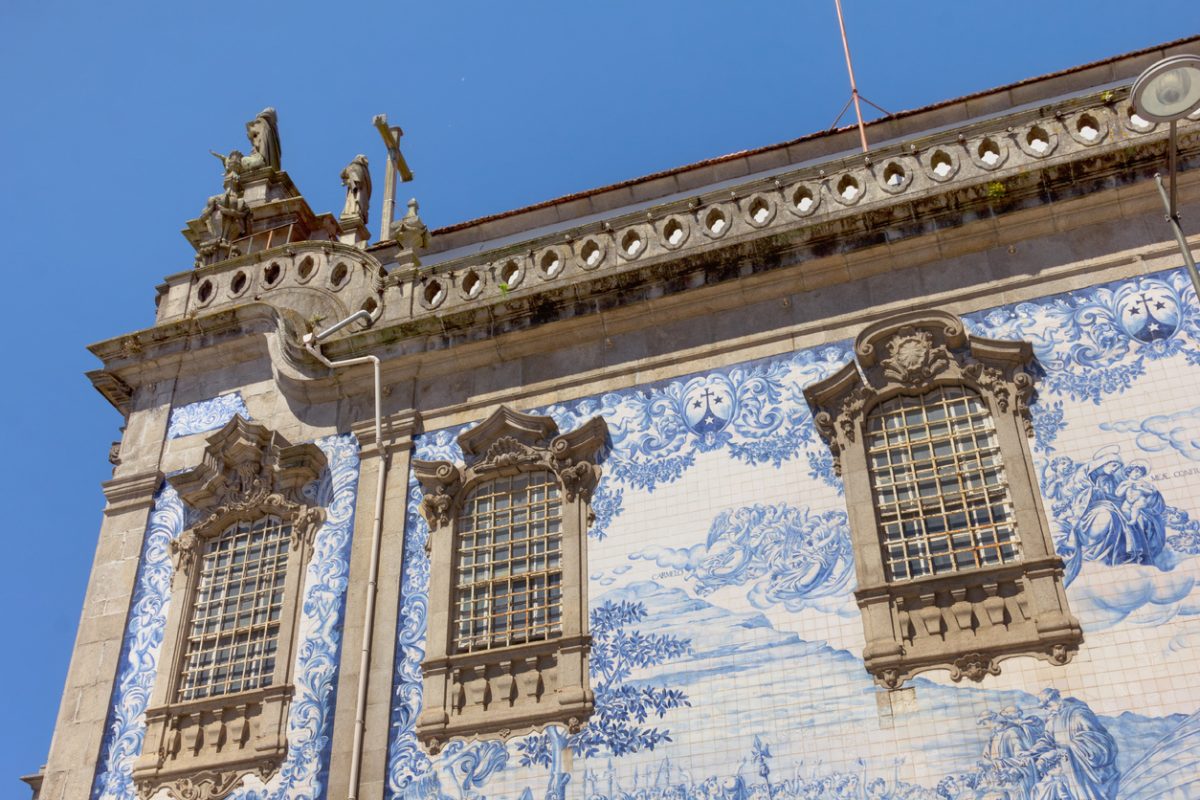
The centrally-located Igreja do Carmo is one of Porto’s glorious blue-tiled churches – although it’s actually made of two buildings!
Standing proudly as a landmark of the city, it’s one of the most popular places to visit for all tourists.
It actually consists of two churches built right next to each other. This happened because it was initially a nunnery, until laymen turned up and asked if they could join the church.
The nuns didn’t want the men joining but were keen not to discourage their religious interests, so they invited the laymen to build their own church next door.
After both churches were built, there was a small alleyway running between the two. This ended up being the site of various un-Christian acts, so eventually, the alleyway became a house – which is now the smallest house in Porto.
However, nobody lives there – you can pay to enter and see how small it really is. The churches are beautiful and worth visiting if you like that kind of thing, but as there are 70 churches in Porto, this is much more unusual.
Miradouros
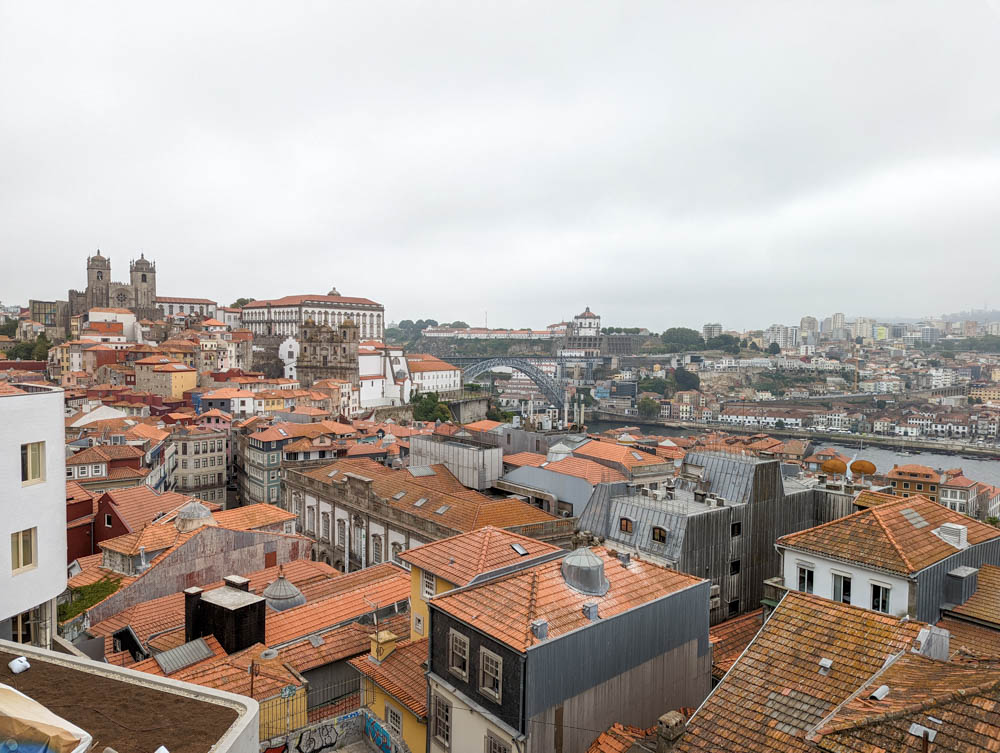
Porto isn’t quite as hilly as Lisbon, but there are still plenty of viewpoints – or Miradouros – that are well worth checking out!
Generally, these look over to Vila Nova de Gaia, with beautiful views over the River Douro.
Here are a few to visit, all with epic views!
- Miradouro da Rua das Aldas: A really cool spot to hang out for a while!
- Miradouro da Vitoria: A hidden spot with incredible views, especially at night.
- Miradouro Ignez: A little further down the river, this has great views back across the Douro and there’s a restaurant/ bar to enjoy!
Capela das Almas
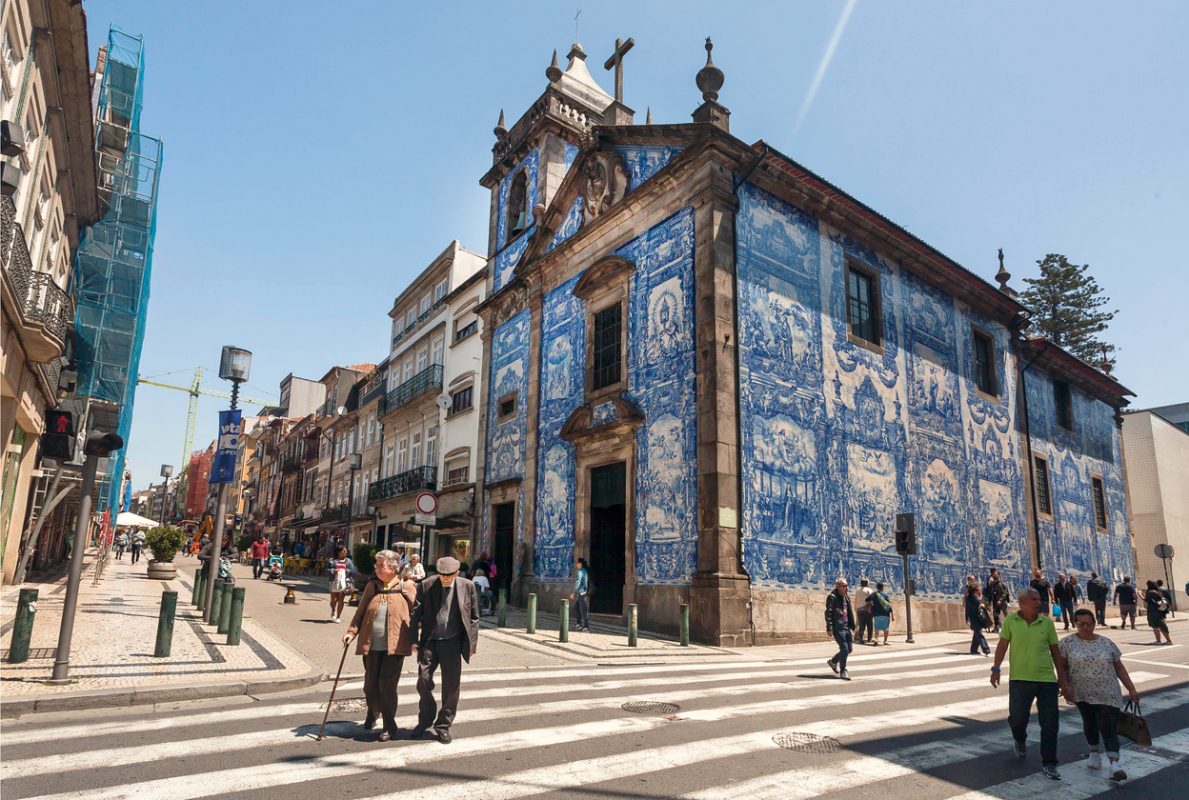
The Capela das Almas was the first thing I saw in Porto City Centre, as I descended out of Bolhao Railway Station.
Also decorated with the blue azulejos which depict the lives of saints, Capela das Almas is a wonderful place for taking photos – you can use the tiles as a backdrop!
The tiles are created in an 18th century style, although they date to the 20th century.
Winter Surfing in Porto
Overlooking the crashing Atlantic Ocean, Portugal is a renowned place for surfing. While surf schools see the majority of their business during the summer, it’s possible to do surf lessons in the winter as well!
The waves are generally a little rougher and more tumultuous during this season, and they’re generally advised for intermediates. However, if you’re keen on trying out the sport during your winter trip to Porto, you can browse surf lessons here.
Douro Valley Tour
Port wine originates not from the city itself, but from the Douro Valley, about 90 minutes away from Porto. There’s a specific area in the region, and only grapes from here can be classed as port wines.
So, this is a completely unique day trip from Porto, unlike any in the world – and it’s still possible in the cooler months.
This tour includes visiting two wine estates and taking a boat tour on the river. It’s a glorious way to escape the city for a day!
Where to stay in Porto in winter
Zero Box Lodge Hostel is an ultra-cool dwelling with a really modern concept. The rooms are boxes; they’re completely private and come with a comfortable double bed, air conditioning, towels and en-suite bathrooms (which are actually about the same size as the bedroom).
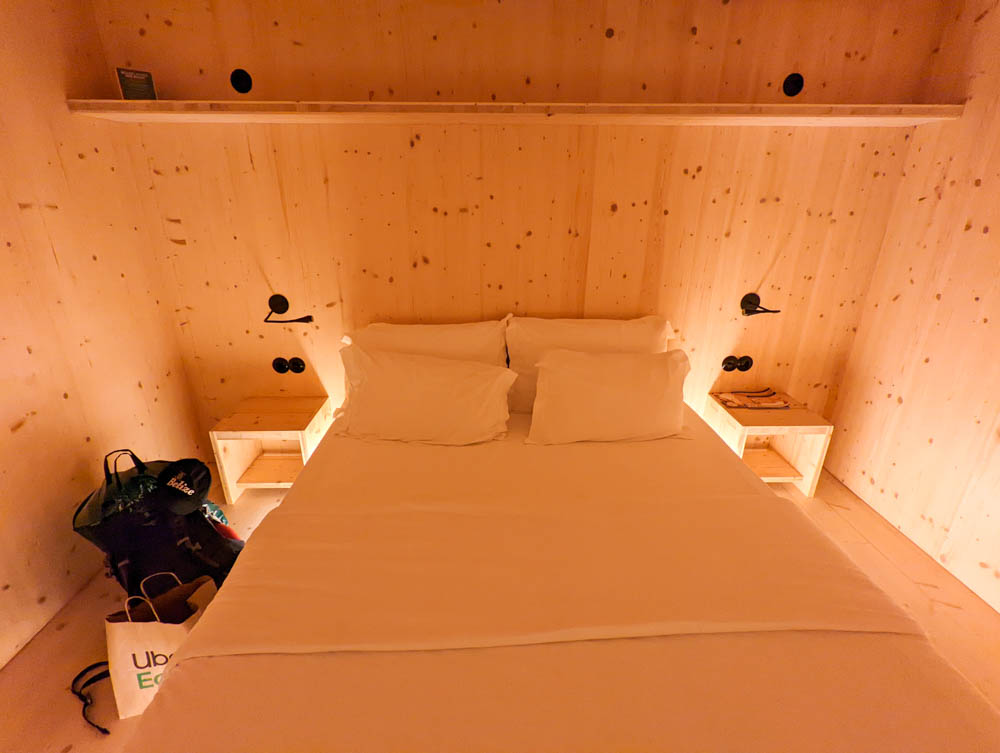
The rooms don’t have a window, but outside of your box, there’s a rooftop with two dunk tanks, a sauna and a restaurant downstairs. I stayed here and loved it, and would definitely stay again. Sound interesting? Click here to read a bit more about this hotel (and to check out the cool box concept!).
Oca Oriental Porto Hotel is a mid-range hotel with beautiful bright rooms featuring comfy beds and fresh linen. There’s a fitness centre and bar on site! Click here to read more about it.
Fancy luxury? Casa da Companhia boasts a spa and wellness centre and deluxe rooms, some with roll-top baths. It also has a gorgeous rooftop pool – which is out of action in the winter – but you can enjoy its indoor pool, hammam bath and other spa facilities year-round. Click here to read more.
Where to eat in Porto in winter
There are two main foods from Porto – tripe and Franceschina.
Being a vegetarian, tripe wasn’t on the menu for me – and a few locals who I spoke to about the delicacy didn’t seem all that keen on it either.
Traditional Franceschina isn’t veggie-friendly either. It is a highly calorific sandwich with ham and sausage inside, covered with melted cheese, topped with a fried egg and served in a tomato and beer sauce.
Anyone who visits Porto raves about Franceschina – and if you want to try it for yourself (even if you’re veggie or vegan), I found the place!
Francesinhas Al Forno da Baixa
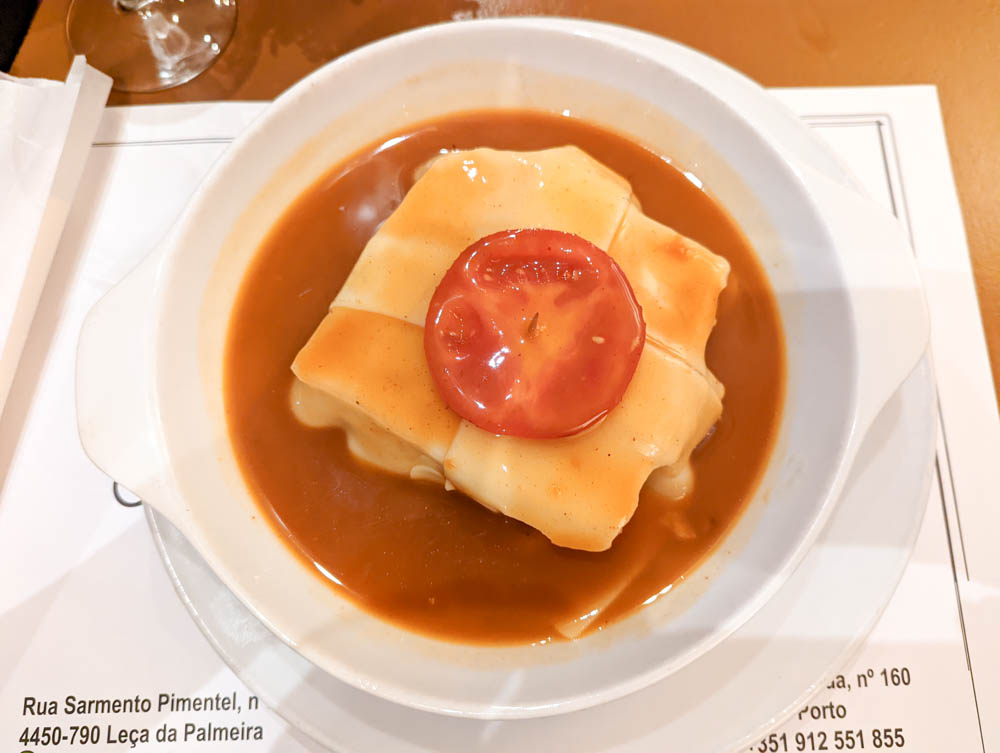
Francesinhas Al Forno da Baixa is a popular francesinha restaurant, serving a range of options including some made with tofu, seitan and tempeh, covered in vegan cheese.
I tried a vegan francesinha here and although it’s not something I’ll eat every day, I’m glad I had the chance to sample traditional Portuguese food.
Francesinhas Al Forno da Baixa serves plenty of meaty francesinhas too and also makes pizza – so there should be something on the menu for everyone!
Noshi
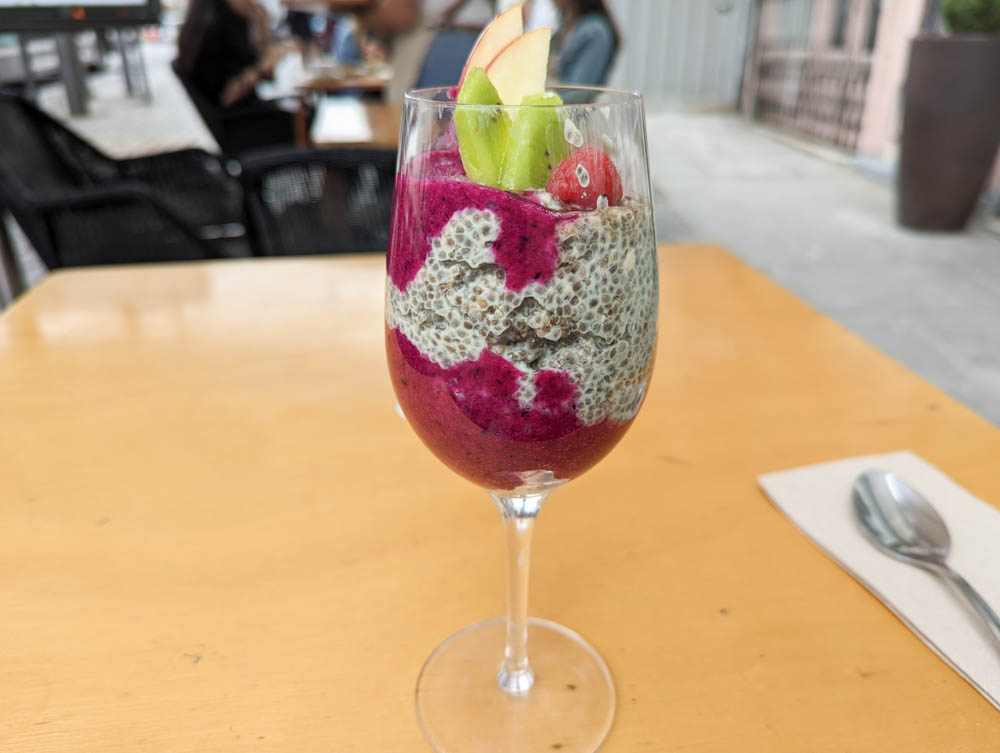
If you like finding trendy brunch spots when you travel, I loved Noshi. Serving fresh coffee and delicious food, have a wholesome start to your day here!
The only thing I’d mention about this restaurant is the smoothie bowls aren’t so much bowls, and more like glasses. This is fine if you just want something light, of course, but if you’re hungry I’d go for one of the cooked breakfast dishes!
Kawaii Poke Bowls
Ok, it’s not traditional Portuguese food, but I absolutely loved these poke bowls – so much so that I went back two days running! You can either dine in or takeaway, and they serve them with rice, avocado, peanuts and whatever protein you want (I chose tofu!).
Extra activity: if you love trying local cuisine when you travel, there are plenty of food tours that you can do around Porto!
What’s Porto like at Christmas?
Portugal is a fairly religious country, so there are plenty of festivities to enjoy in Porto around the Christmas season!
With lots of markets and Christmas events, Porto is a great place to visit at Christmas – the fact that it’s not absolutely freezing makes for a nice change too!
The main celebration in Portugal is on 24th December, although it’s an all-night celebration that lasts until the early hours of the next day!
A popular Christmas food in Portugal is cod (despite the fact that you can’t find it in the waters around the country!), but they also eat some meat on Christmas day.
Most businesses, apart from hotels, are closed on 24th and 25th December.
What’s Porto like at New Years?
Porto is a great place to spend New Years Eve!
There’s a firework display over the river, and many port cellars host their own events, including banquets and nightlife.
As the city isn’t huge, there’s a real sense of community as everyone comes out to celebrate.
Most businesses are shut on New Years Day (January 1st).
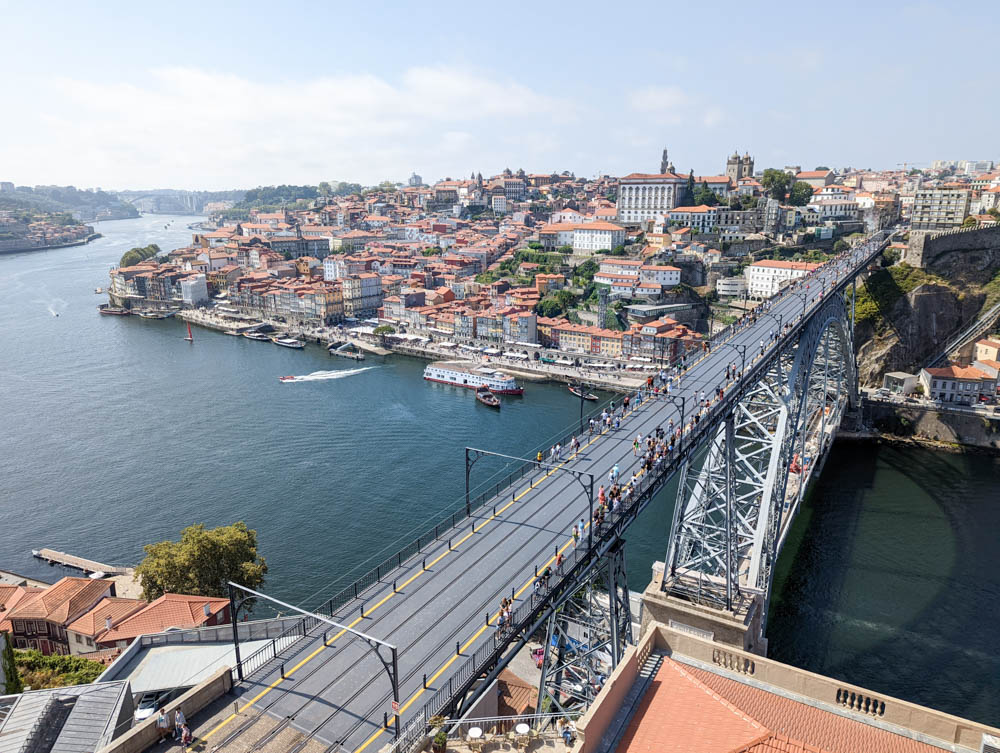
Is there skiing near Porto?
Not really! Portugal’s southern location and petite size means it hasn’t got much in the way of mountain ranges.
However, there’s one resort in the country – Serra da Estrela. On the map, it looks much closer to Porto than Lisbon, but there isn’t really that much in it when it comes to drive time.
It’s just under three hours driving from Porto.
What to wear in Porto in winter
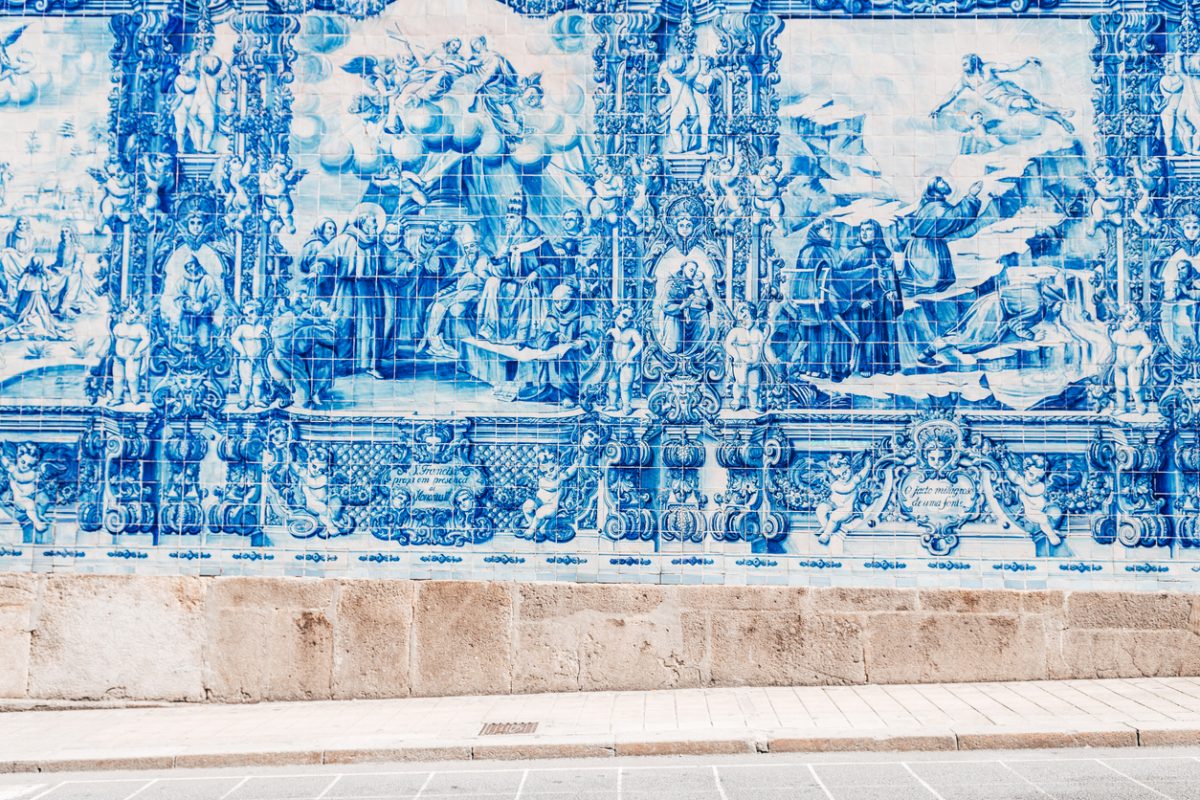
If you’re heading to Porto in winter, expect temperatures of around 10 degrees – maybe more if you’re lucky.
Bearing that in mind, you’ll definitely want some warm clothes. You probably won’t need a scarf, gloves and a woolly hat, but I’d definitely recommend packing a coat and long trousers/ pants and jumpers.
Don’t presume that, because you’re going to Portugal, all you’ll need is shorts and T-shirts. Granted, it’ll probably be warmer than where you’re flying in from, but Porto can really be quite chilly.
What to pack for Porto in winter

Along with appropriate clothing, here are a few items you might want for your trip to Porto in the winter:
- Water to Go Bottle: You can drink the tap water in Portugal, but on my recent trip I found that my stomach was a little irritated, and I think it was from the tap water. If you bring a water to go bottle, it’ll filter out any nasties and leave you with clean drinking water. Plus, you’ll save money!
- Bumbag (fanny pack) or cross-shoulder bag: European cities can be notorious for pickpocketing, but a bumbag (or a fanny pack to my American friends!) should keep your belongings safe. Alternatively, a cross-shoulder bag will do the same!
- Comfy shoes: Porto is a very walkable city, so make sure you pack comfy shoes that’ll take you around all the main sites!
- Face mask: Currently, it’s a legal obligation to wear face masks on public transport in Portugal.
- You can purchase most toiletries in Portugal, but if you have a brand that you particularly like, don’t forget to bring that with you, decanting into 100ml empty travel bottles if you’re flying hand luggage only.
- Don’t forget an EU adaptor so you can use your electronics in Portugal.
How long do you need for Porto?
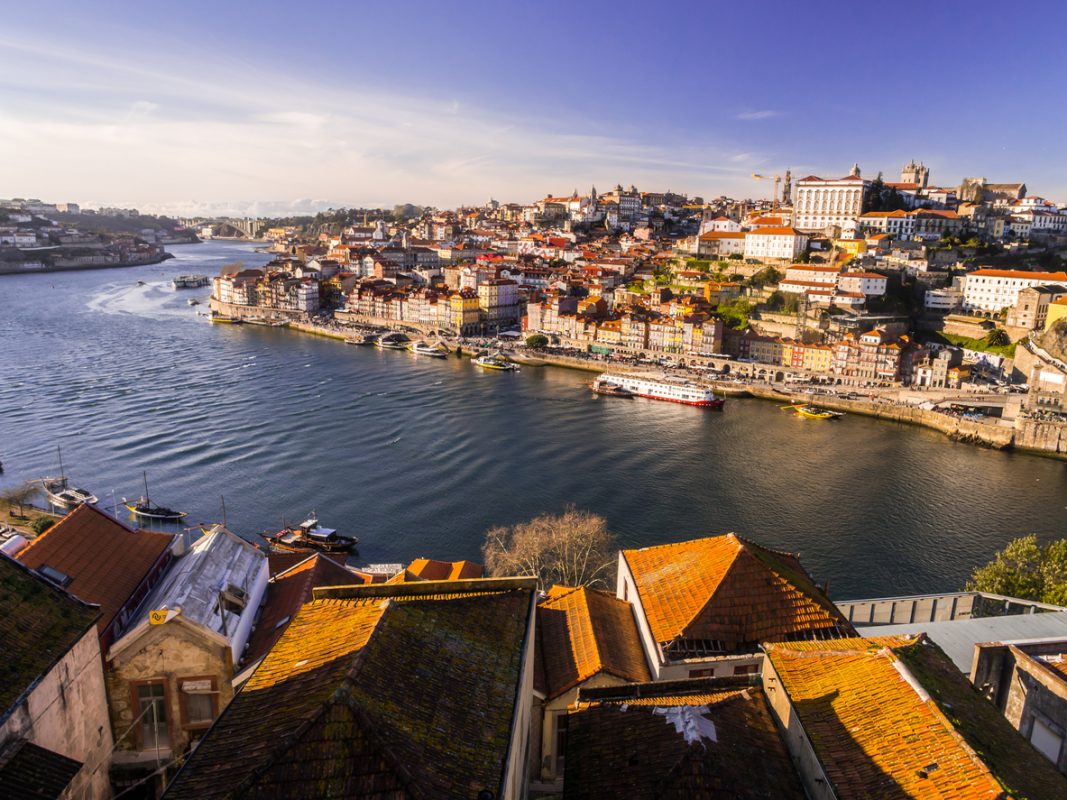
I’d recommend at least a couple of days to explore Porto in winter.
This will enable you to check off most of the attractions listed above! If you stay for longer, you’ll enjoy some of the popular day trips from the city too.
Where to go from Porto
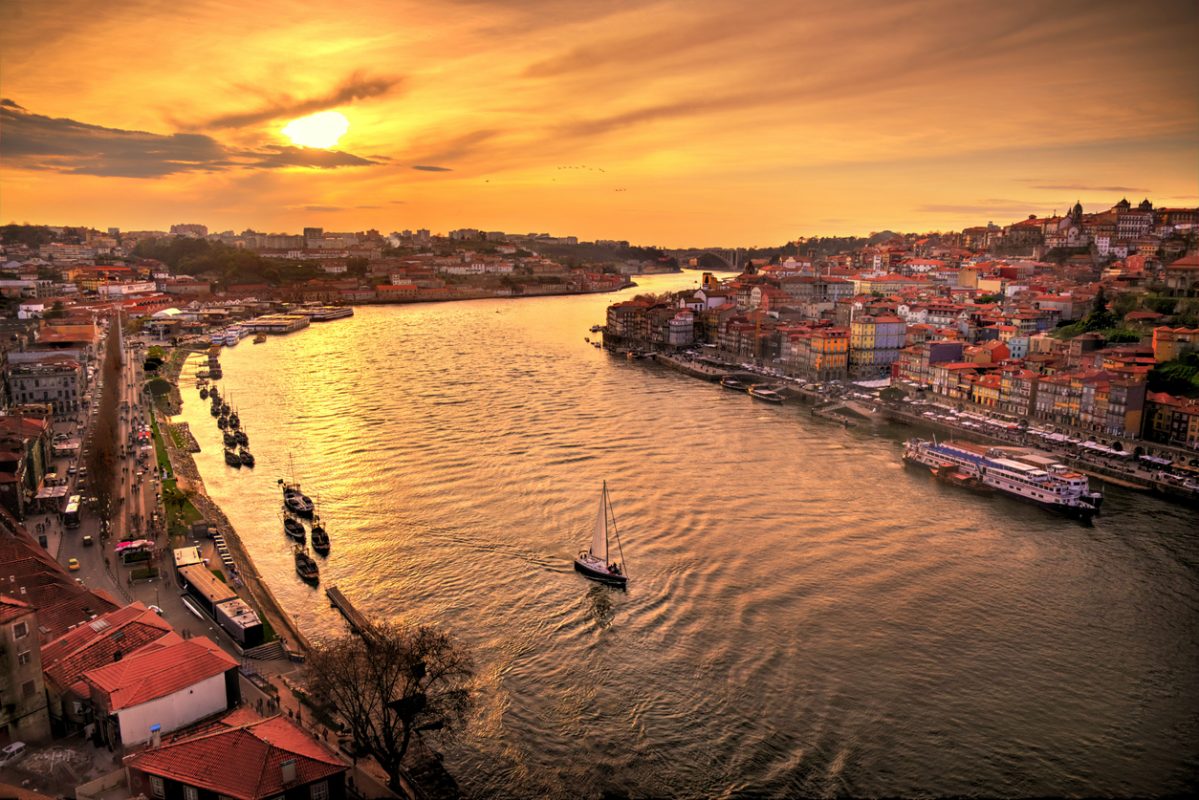
There are loads of places in Portugal and Spain that are worth visiting in winter.
From Porto, you can take a bus or train south to reach Lisbon, the Portuguese capital that has warmer weather throughout the winter!
Or head even further south, to the beaches of the Portuguese Algarve, which are popular winter sun destinations in winter.
In Spain, Seville and Malaga tend to have good weather throughout the summer, or you could connect on a regional flight or ferry to the Canary Islands, which are the ultimate winter sun destination!
Alternatively, head to the Spanish Pyrenees or the Sierra Madre for skiing.
The Spanish Balearic Islands (Mallorca, Ibiza and Menorca) can be beautiful too. They’re a little chillier in winter than other European destinations, but we’re talking Mediterranean islands here – they’re incredible year-round!
Are you ready for Porto in winter?
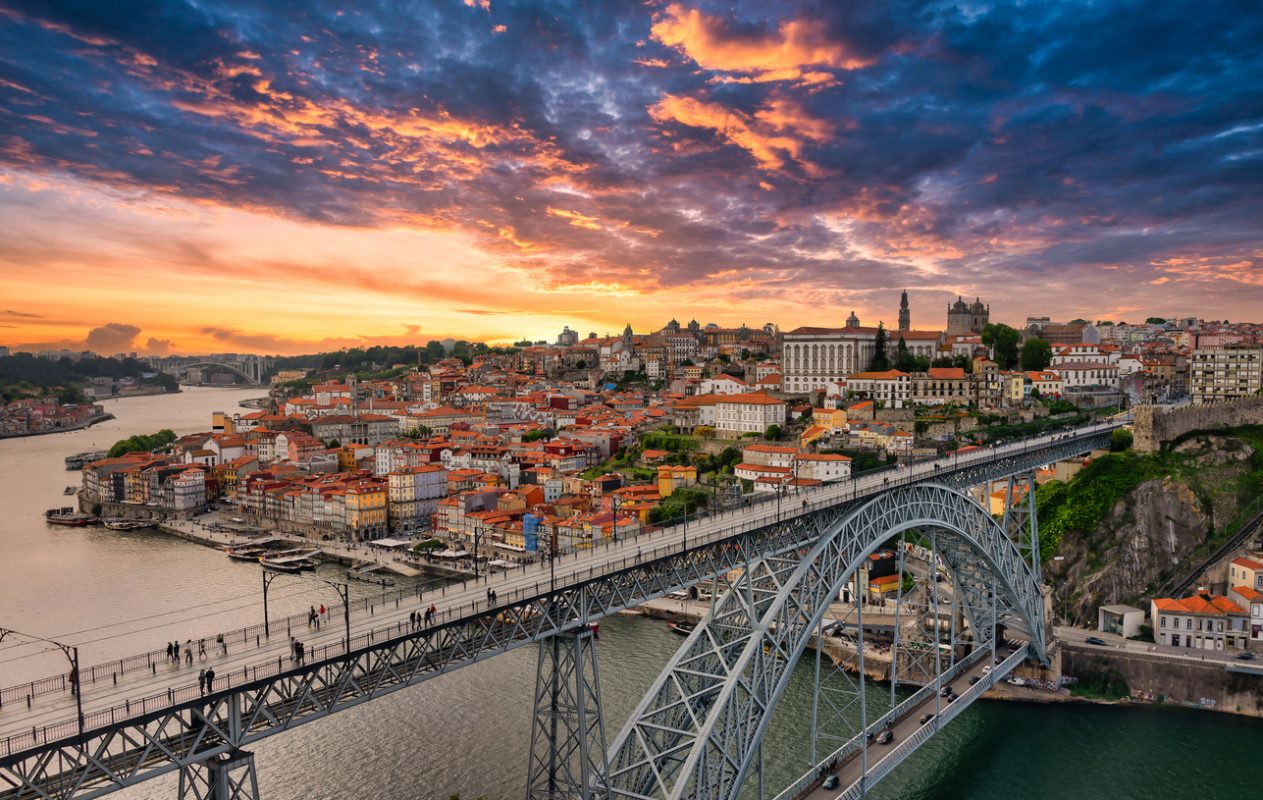
The wonderfully historic city of Porto draws in travellers from the second they step off the bus, train or plane.
Maybe it’s the blue azulejos that line the buildings, or perhaps it’s the incredible vistas of the Duoro snaking thorugh the city, or possibly the fantastic Portuguese nightlife?
Whatever your reason for visiting Porto, it’s a phenomenal winter travel destination, with virtually all attractions open year-round.

